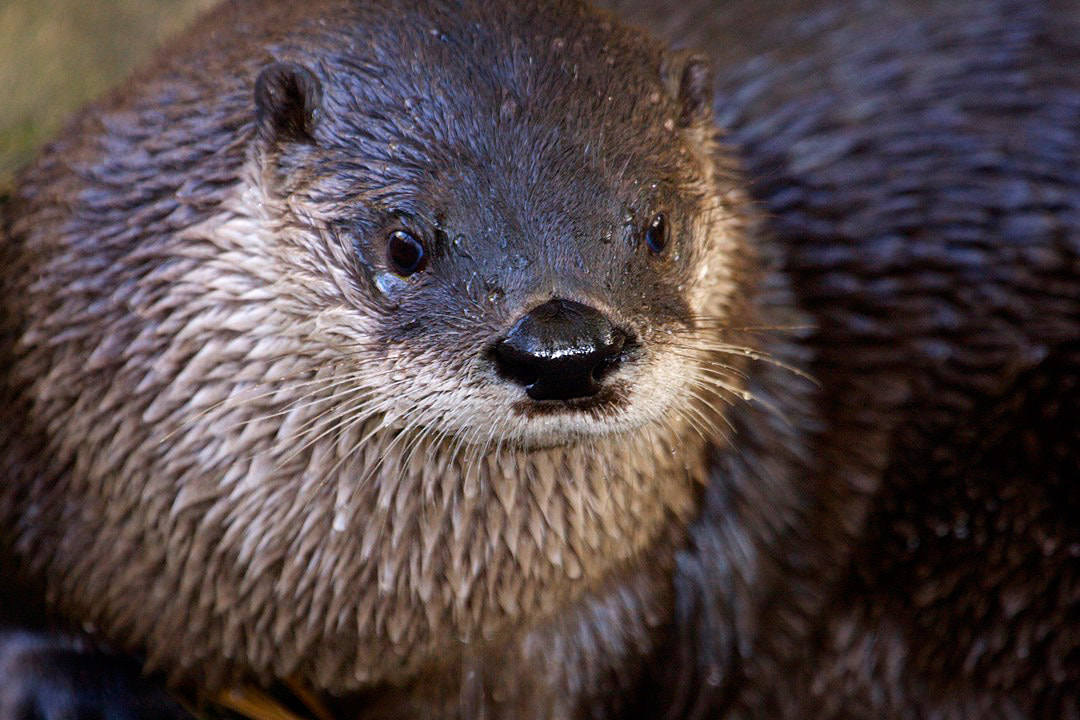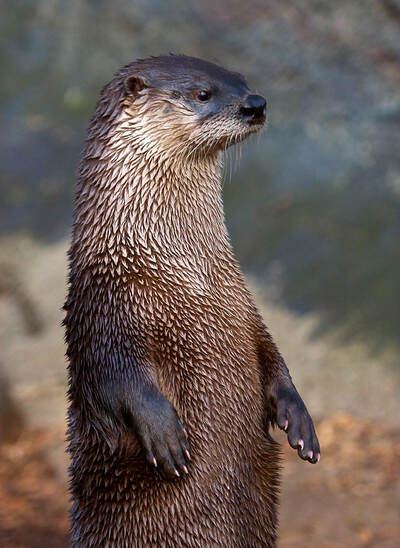North American River Otter (Lontra canadensis)Physical Description: A North American River Otter’s long narrow body can range in length from 18 in. to 42 in., not including the tail. They can weigh 8 to 40 pounds with males larger than females. Their brown fur is short and dense. The muscular tail is thick at the base and tapers to the tip. These playful mammals can close their ears and nostrils when swimming underwater. They can remain underwater for six to eight minutes! When they swim, they use their tails and back legs to push them through the water at speeds of up to 18 mph! North American River otters appear playful and cute; however, they have very sharp teeth and powerful jaws.
Habitat: The North American River Otter lives in ponds and lakes in wooded areas, rivers, marshes, estuaries, and along marine coasts. Range: They can be found throughout the United States, outside of the United State of America Midwest and southwest. Diet: They mostly eat fish, but also crabs, crayfish, waterfowl, eggs, turtles, freshwater clams, and small mammals. Lifespan: They live on average 15 years in the wild and up to 23 in human care. Social Structure: They are social animals except during the breeding season. Females have litters of 1-4 young (pups) after a 285-380 day gestation period. The pups stay with the female for one year. Status: Least Concern1 Other: Mink and River Otters are both mustelids and share many characteristics. Mustelids are fur-bearing carnivores that inhabit terrestrial and aquatic regions throughout the world, except Australia, Antarctica, and most oceanic islands. Recently, the American mink and their tracks have been observed by the banks of the Pequonnock River! Learn more about the American mink here 1 https://www.iucnredlist.org/species/12302/164577078 |
Connecticut’s Beardsley Zoo is dedicated to acquainting a diverse public to the delicate balance that exists between living things and their environment.
Connecticut's Beardsley Zoo is a 501(c)(3) not for profit owned and operated by the Connecticut Zoological Society.
Connecticut's Beardsley Zoo is a 501(c)(3) not for profit owned and operated by the Connecticut Zoological Society.
© 2022 Connecticut's Beardsley Zoo








